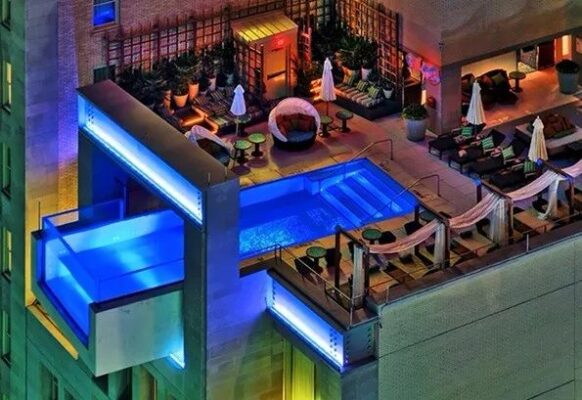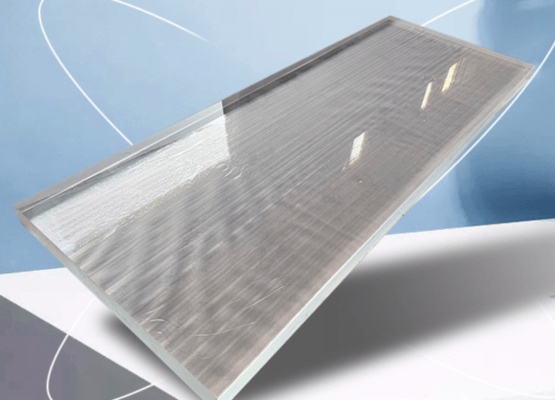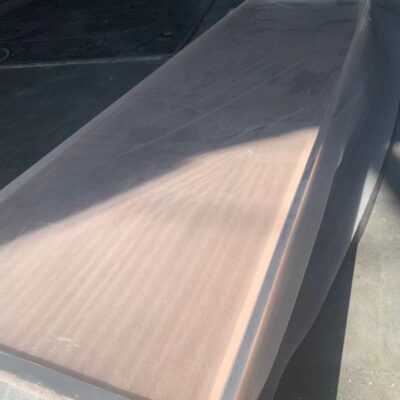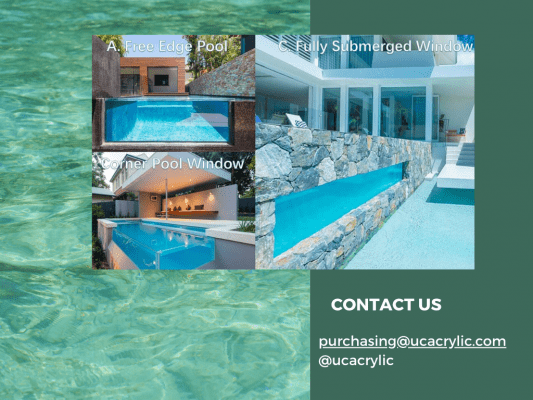Why Choose Acrylic for Swimming Pools?
Acrylic plexiglass, often referred to as the “plastic queen” or “plastic crystal,” is a specially processed material known for its exceptional transparency and durability. With a light transmittance of 92%, acrylic is the ideal choice for transparent swimming pools. Its physical properties make it a superior alternative to traditional materials like glass, offering 16 times the impact resistance of glass of the same thickness.
Key Features of Acrylic for Swimming Pools
- High Transparency: Acrylic sheets offer over 92% light transmittance, creating crystal-clear pool walls.
- Weather Resistance: Acrylic performs well under sunlight, wind, and rain, making it perfect for outdoor use.
- Ease of Processing: Acrylic can be machined, thermoformed, and customized into various shapes.
- Safety: Acrylic is non-toxic and safe for long-term human contact.
- Impact Resistance: It is 16 times stronger than glass, making it ideal for high-safety applications.
- Lightweight: Acrylic is half the weight of glass, reducing structural load.
- Recyclability: Acrylic is environmentally friendly and recyclable.
- Low Maintenance: Easy to clean with water or a soft cloth.
Advantages of Acrylic Over Other Materials
Acrylic’s unique properties make it the best choice for transparent swimming pools:
- Durability: Resistant to yellowing, hydrolysis, and environmental damage.
- Versatility: Can be dyed, painted, or coated for customized designs.
- Insulation: Excellent electrical insulation properties.
- Aesthetic Appeal: Maintains high transparency and gloss over time.
Bonding Techniques for Acrylic Products
The bonding process is crucial for acrylic products, especially for transparent swimming pools. Here are some key techniques:
- Docking: Join two acrylic sheets with a gap no larger than 0.3mm, then inject adhesive evenly.
- Facade Lamination: Use a die to ensure stability during bonding.
- Bevel Bonding: Use a 90-degree angle to prevent shifting during bonding.
- Flat Bonding: Apply adhesive evenly and slowly to avoid air bubbles.
Proper bonding ensures the clarity and durability of acrylic products, making them perfect for high-end applications like transparent swimming pools.
Maintenance Tips for Acrylic Swimming Pools
- Avoid High Temperatures: Acrylic can deform at temperatures above 70°C.
- Prevent Scratches: Use soft cloths and avoid abrasive cleaners.
- Use Gentle Cleaners: Avoid chemical cleaners; use mild soap and water instead.
- Handle with Care: Protect acrylic surfaces during installation and maintenance.
- Polish Regularly: Use liquid polishing wax to maintain gloss.
Why Choose UC Acrylic?
UC Acrylic is a leading manufacturer of high-quality acrylic products, including transparent swimming pools. With advanced production technology and a skilled installation team, we ensure every project meets international standards. Our expertise guarantees stunning, durable results that exceed expectations.
For more information, visit:
Conclusion: Transform Your Pool with Acrylic
An acrylic transparent swimming pool is more than just a pool—it’s a statement of luxury and innovation. With its unmatched transparency, durability, and aesthetic appeal, acrylic is redefining modern pool design. Whether you’re creating a serene retreat or a bold architectural masterpiece, acrylic offers endless possibilities.




